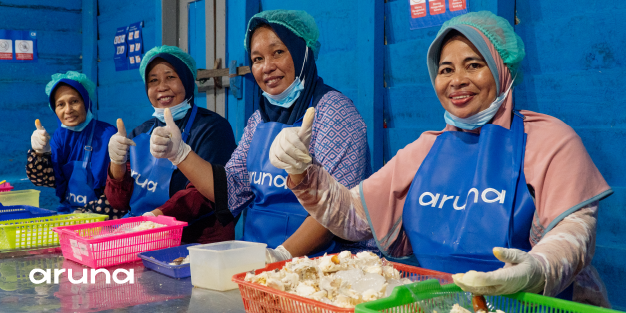As the largest archipelagic country in the world, Indonesia needs to maintain its valuable marine resources. Therefore, the Ministry of Maritime Affairs and Fisheries (KKP) is committed to restoring aquatic ecosystems through marine area conservation efforts, not to mention protecting sea turtle habitats in Indonesia.
The Ministry of Maritime Affairs and Fisheries, through the Directorate General of Marine and Marine Spatial Management (Ditjen PKRL), has designated 5.5 million hectares of sea turtle habitat as a conservation area. This step is part of Indonesia’s commitment to safeguard sea turtles and their crucial role in maintaining the marine ecosystem’s balance.
Why should We Prioritize Sea Turtle Conservation Efforts?
The World Wide Fund for Nature (WWF) states that over the past 30 years, an estimated 1.1 million sea turtles worldwide have been illegally exploited and traded. The Asia Pacific region has emerged as a notable for illegally smuggling on sea turtle meat, eggs, and carapaces.
Indonesia is home to six of the world’s seven sea turtle species. The Indonesian seas serve as a migration route, feeding ground, and breeding site for the following species:
- Green sea turtle (Chelonia mydas)
- Hawksbill sea turtle (Eretmochelys imbricata)
- Olive ridley sea turtle (Lepidochelys olivacea)
- Leatherback sea turtle (Dermochelys coriacea)
- Flatback sea turtle (Natator depressus)
- Loggerhead sea turtle (Caretta caretta)
As a result, the Indonesian government places significant emphasis on the sea turtles protection due to their status as a threatened aquatic species. Firdaus Agung, the Director of Conservation and Marine Biodiversity, emphasizes that conservation efforts for sea turtles are a top priority.
Government Commitment to Sea Turtle Conservation
The Ministry of Maritime Affairs and Fisheries has established 44 primary sea turtle conservation areas in 20 priority locations across 15 provinces. This significant step in sea turtle conservation is part of the 2020-2024 National Action Plan (RAN) for sea Turtle Conservation, which provides guidelines for managing sea turtles in Indonesia.
In addition, the Ministry of Maritime Affairs and Fisheries is working with various stakeholders, including the Ministry of Environment and Forestry (KLHK), the National Research and Innovation Agency (BRIN), local governments, universities, community organizations, and groups to develop sea turtle conservation plans. This collaborative effort aims to enhance the effectiveness of sea turtle conservation in Indonesia.
Achievements in Sea Turtle Conservation Efforts
In 2023, the sea turtle conservation actions carried out by the Ministry of Maritime Affairs and Fisheries and stakeholders have yielded positive results, including:
- Decreased sea turtle hunting in Paloh, Sambas, West Kalimantan, and Buru Island, Maluku, through collaboration with community groups to monitor and supervise nesting beaches.
- Reduced indirect use of leatherback sea turtles in the Kei Islands, Southeast Maluku, with increasing public awareness of the importance of preserving sea turtles.
- Support from WWF for establishing the Marine Protected Area in North Buru, Maluku, aiming for broader protection of the habitat of sea turtles and other marine biota.
The sea turtle conservation movements in Indonesian seas should be a continuous commitment. The Ministry of Maritime Affairs and Fisheries is devoted to expanding marine conservation areas and increasing the effectiveness of sea turtle conservation programs. Stakeholders’ collaboration is fundamental in realizing the conservation of Indonesian sea turtles and seas.
As a fishing company committed to sustainability, Aruna also supports sea turtle conservation efforts in Indonesia. We invite the entire community to work together to preserve marine biota and its ecosystem.
Let’s protect the sea turtles, protect the sea, and protect the future!











Leave a reply
No comments found.